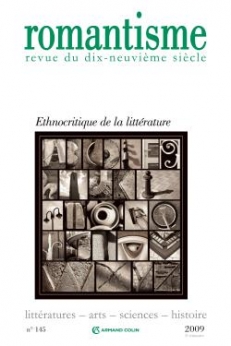
Romantisme n° 145 (3/2009)
Pour acheter ce numéro, contactez-nous
Recevez les numéros de l'année en cours et accédez à l'intégralité des articles en ligne.
Avec le personnage de Stéphanie de Vandières dans Adieu, Balzac reprend à son compte un thème largement débattu depuis la seconde moitié du XVIIIe siècle, celui de l’« homme sauvage » (en l’occurrence il s’agit ici d’une « fille sauvage ») en qui les relations de proximité entre l’homme et l’animal sont telles qu’elles troublent les limites entre humanité et animalité. Corps ensauvagé et sans contrainte, celui de la jeune femme porte atteinte, particulièrement aux yeux de son amant, aux limites de l’espèce humaine en tant qu’être social. Mais la question de la limite et celle de l’ensauvagement ne se résument pas uniquement à des considérations anthropologiques ou philosophiques, elles hantent le texte à d’autres niveaux, notamment esthétique et poétique. En effet, il s’avère qu’il n’y a pas loin entre le corps de Stéphanie et le corps du roman, l’ensauvagement de l’un figurant métaphoriquement la nature « sauvage » de l’autre.
Through the character of Stéphanie de Vandières in Adieu, Balzac revisits a theme frequently addressed since the second half of the 18th century : the “feral man” (in this case, a “feral girl”) in whom the proximity between human and animal leads to a blurring of the boundaries between humanity and animality. Freed from inhibitions, the young woman’s feral body transgresses, especially in the eyes of her lover, the boundaries of the human as a socialised being. However, these issues of boundary, of feralisation, are not exclusively worked into the text as anthropological or philosophical considerations. They are also present on other levels, notably aesthetic and poetic. In fact, there is little difference between Stéphanie’s body and the body of the novel, the ferality of the former being a metaphor for the “wildness” of the latter.

